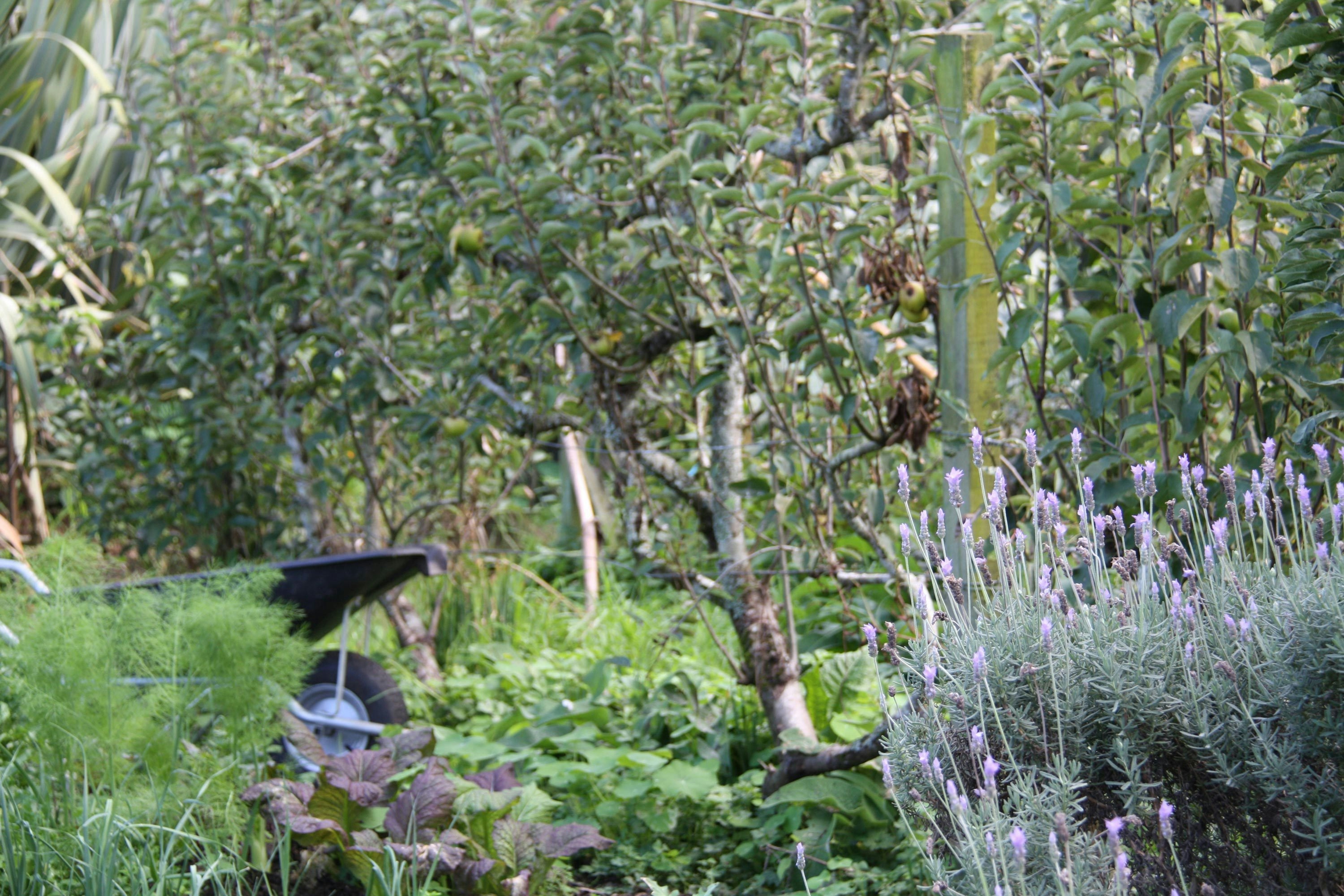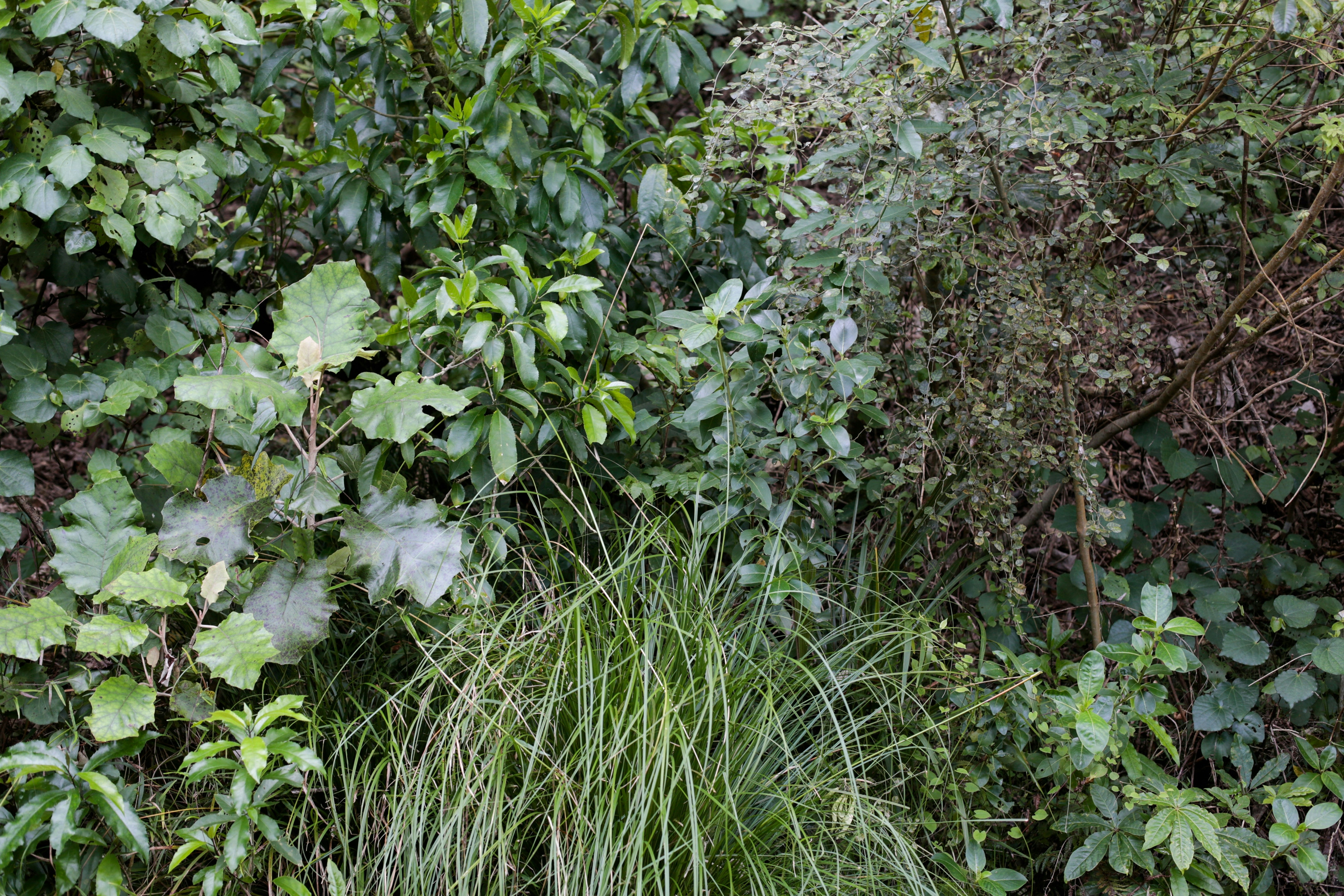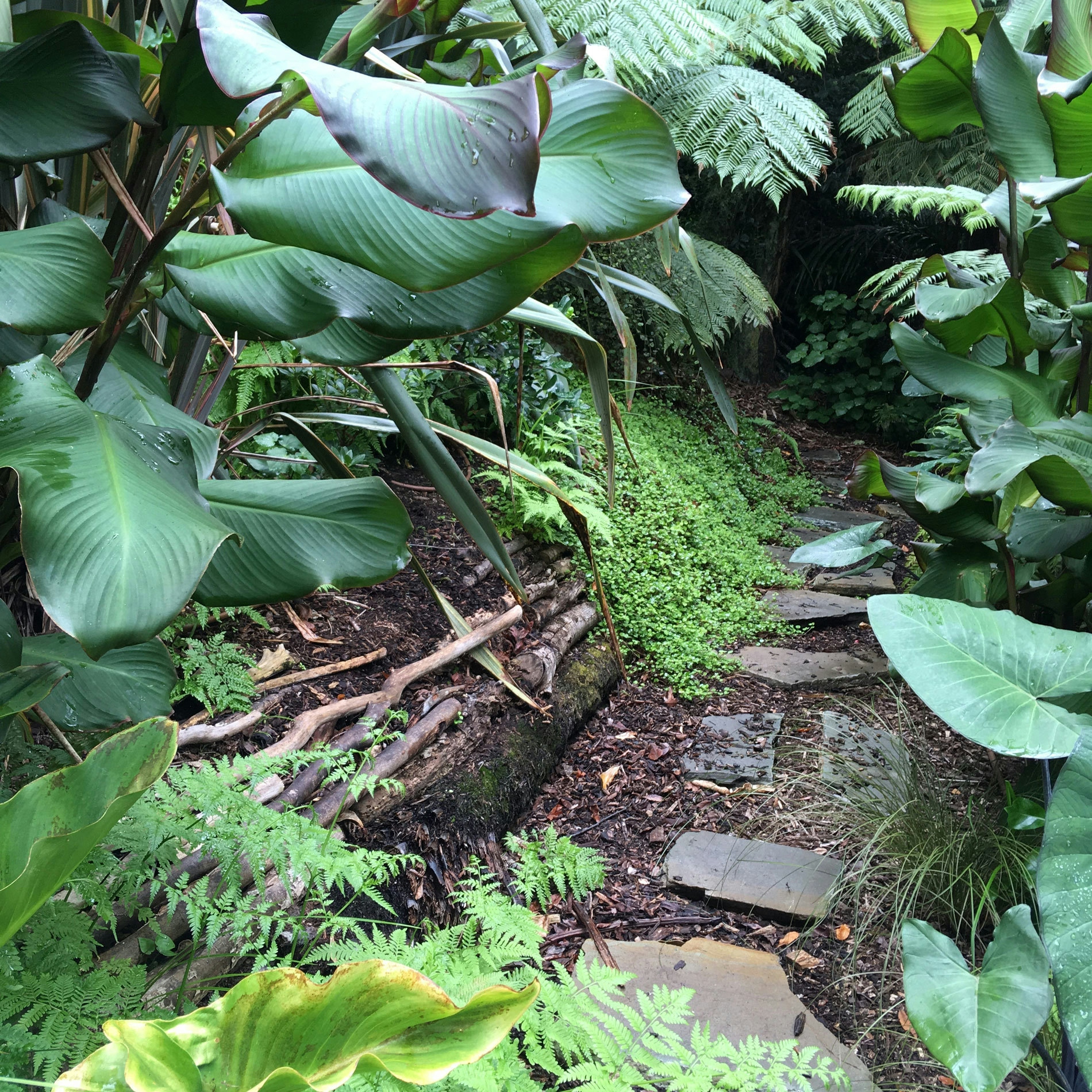
Journal — Dirt
Justin Hurt
07th March 2021
Case study: Creating a naturally sustaining garden on a sloped site
In this post Justin Hurt explains the process behind this special project in Remuera, where he used materials from the site and minimal construction to create living breathing walls that sustain this sloped, bush bank.
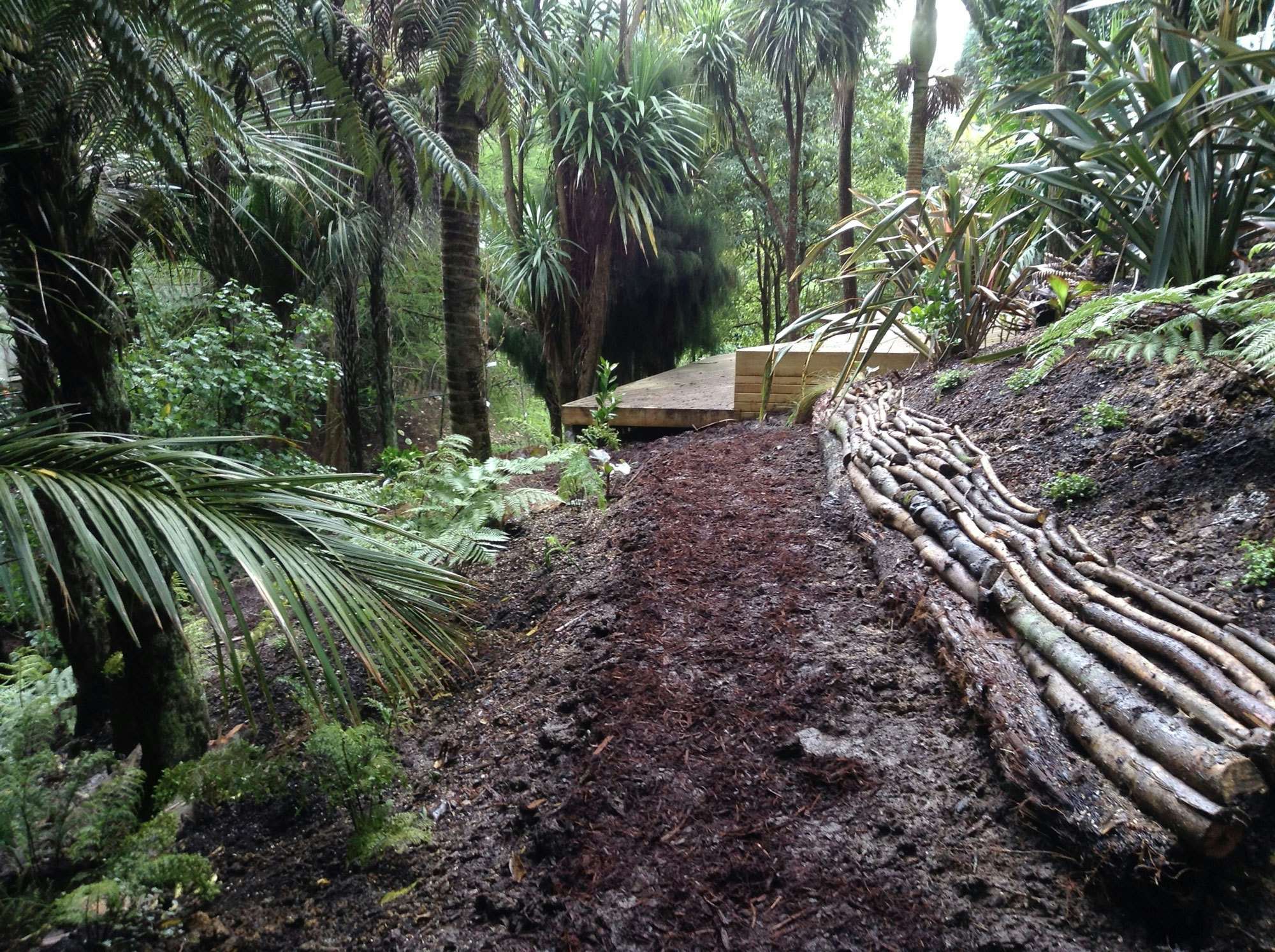
Situated in Remuera on a steep site in leading down to a creek, the garden winds through a mix of local natives and fruit trees underplanted with tropicals such as calocasia, and cannas. After preparing the site, shaping the path, and adding steps, the steep inner edges of the path required something to hold back mulch and organic material, stopping it from sliding down the sloping banks and ending up in a heap at the bottom.

The banks were otherwise stable due to the composition of the soil, which being predominantly clay holds itself together well. Along the edge of the creek, a large Taxodium distichum (Swamp Cypress) lines the banks with its roots, and during construction a cyclone had passed through and ripped a huge amount of material from the Cypress and the surrounding trees. In cleaning this up all the small branches were chipped and spread on the paths. We were left with a huge pile of branches too large for the chipper and it was decided to use them to line the inside of the paths as a sort of natural retaining.
Cypress is naturally durable so was ideal for this purpose. The only tool used was a chainsaw to cut them to size. Large ponga logs, also on site, were used for the bottom row in places as they are generally quite straight and solid and provide a good base for stacking on top of. Arranging the logs and branches to achieve something that doesn’t look like a big mess is a bit of a jigsaw puzzle, but generally laying the biggest ones first and getting smaller as you go up achieves some cohesiveness and consistency and structurally makes the most sense. The sides of the banks were battered back slightly to aid in stability. The natural twists in the branches were used to follow the curves in the path, and to help lock things together. Staggering the joins as with any form of modular construction aids with strength.
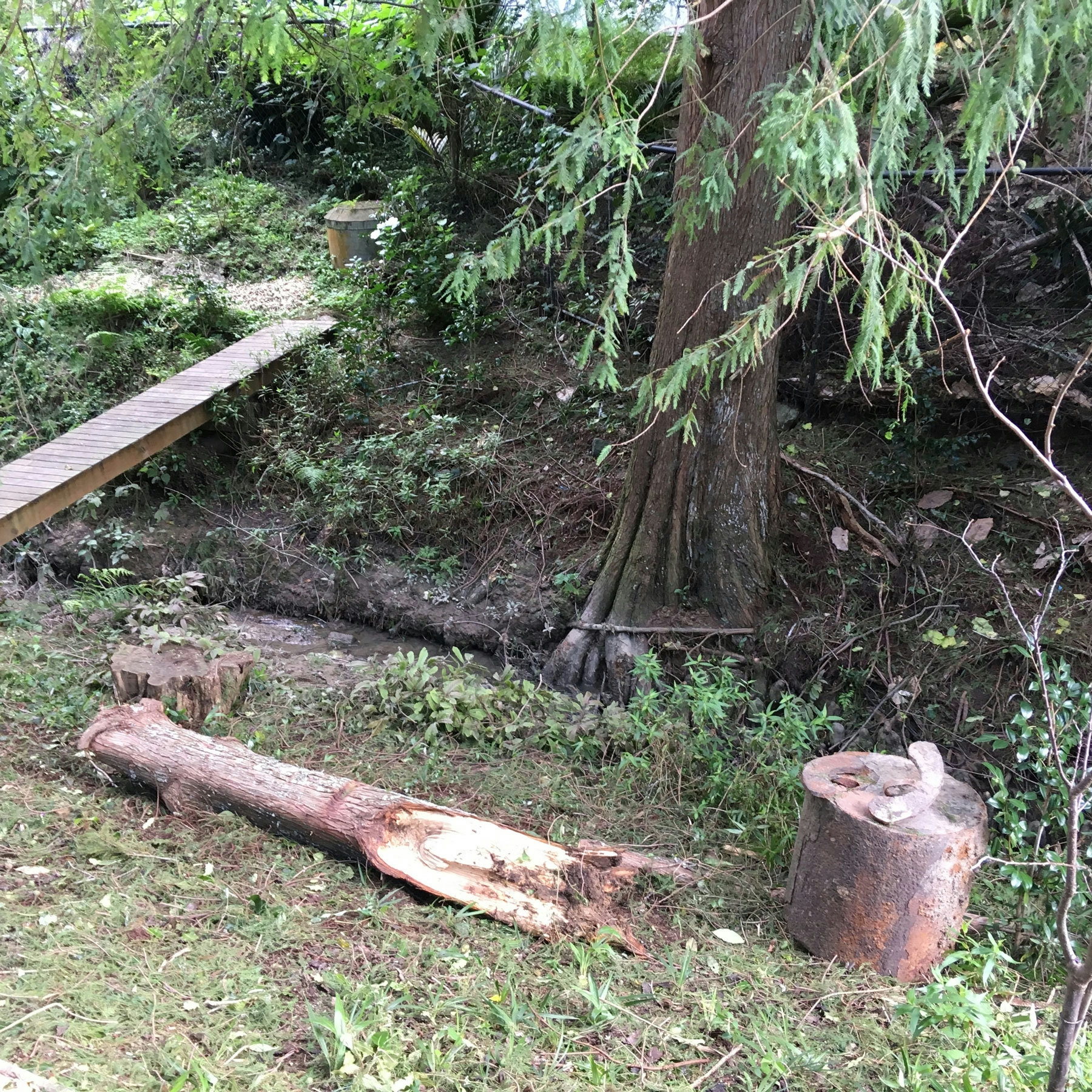
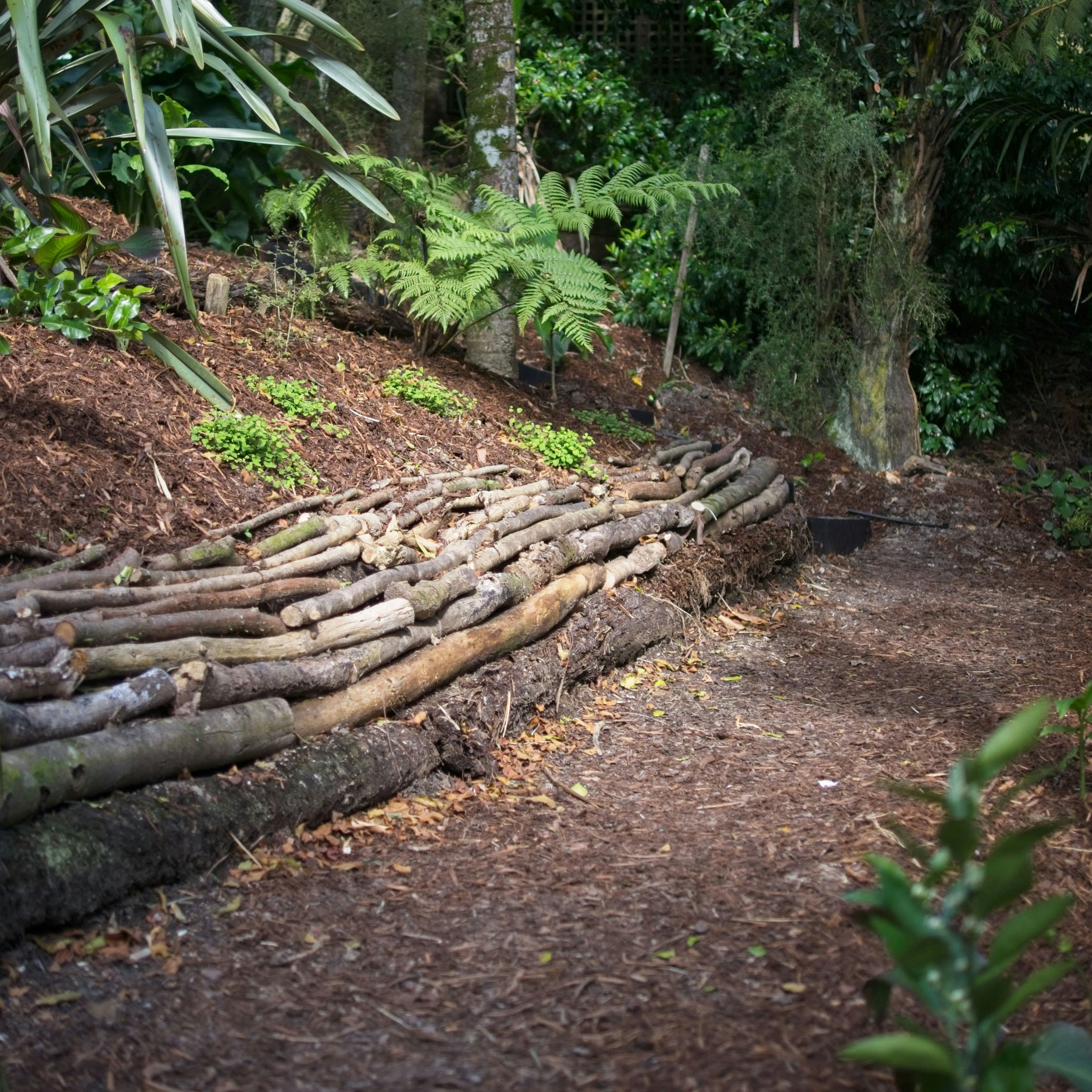
As well as being functional and aesthetically pleasing in this situation, using branches and logs also has benefits for the health of the garden in ways that treated timber wouldn’t. Treated timber is designed to resist decay and in doing so repels bugs and insects, which has it’s place. But if you don’t have structural requirements then its worthwhile considering other materials you might have available.
Rotting logs and branches provide a home for all manner of insects and invertebrates and microbes which in turn benefit the health of the garden by releasing nutrients and becoming food for birds and skinks and other insects, enhancing the cycle. They also provide shade and protection for roots and slowly release moisture back into the earth. It has been interesting to see how well the walls have held up over time, considering they are just stacked wood with no concrete or posts!

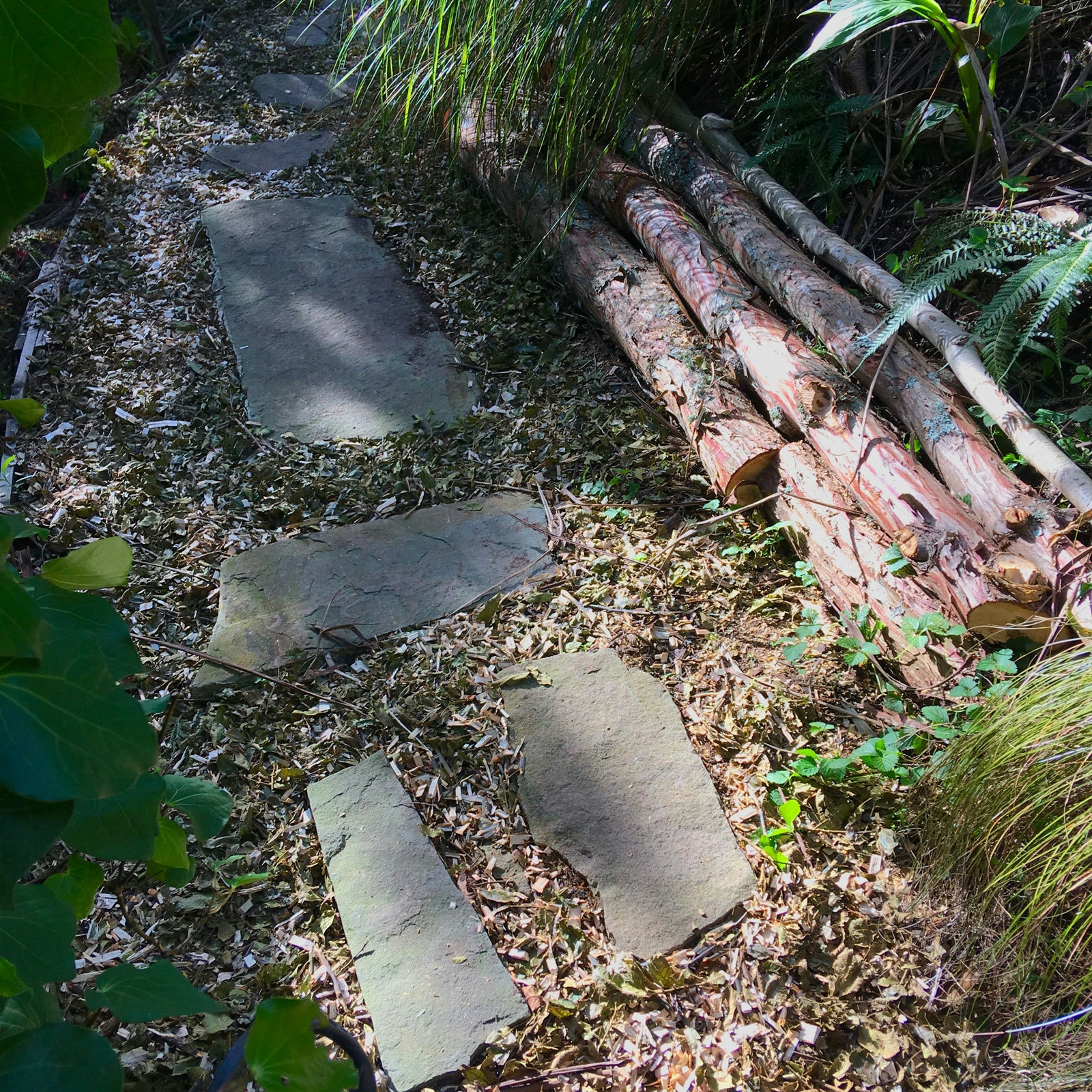
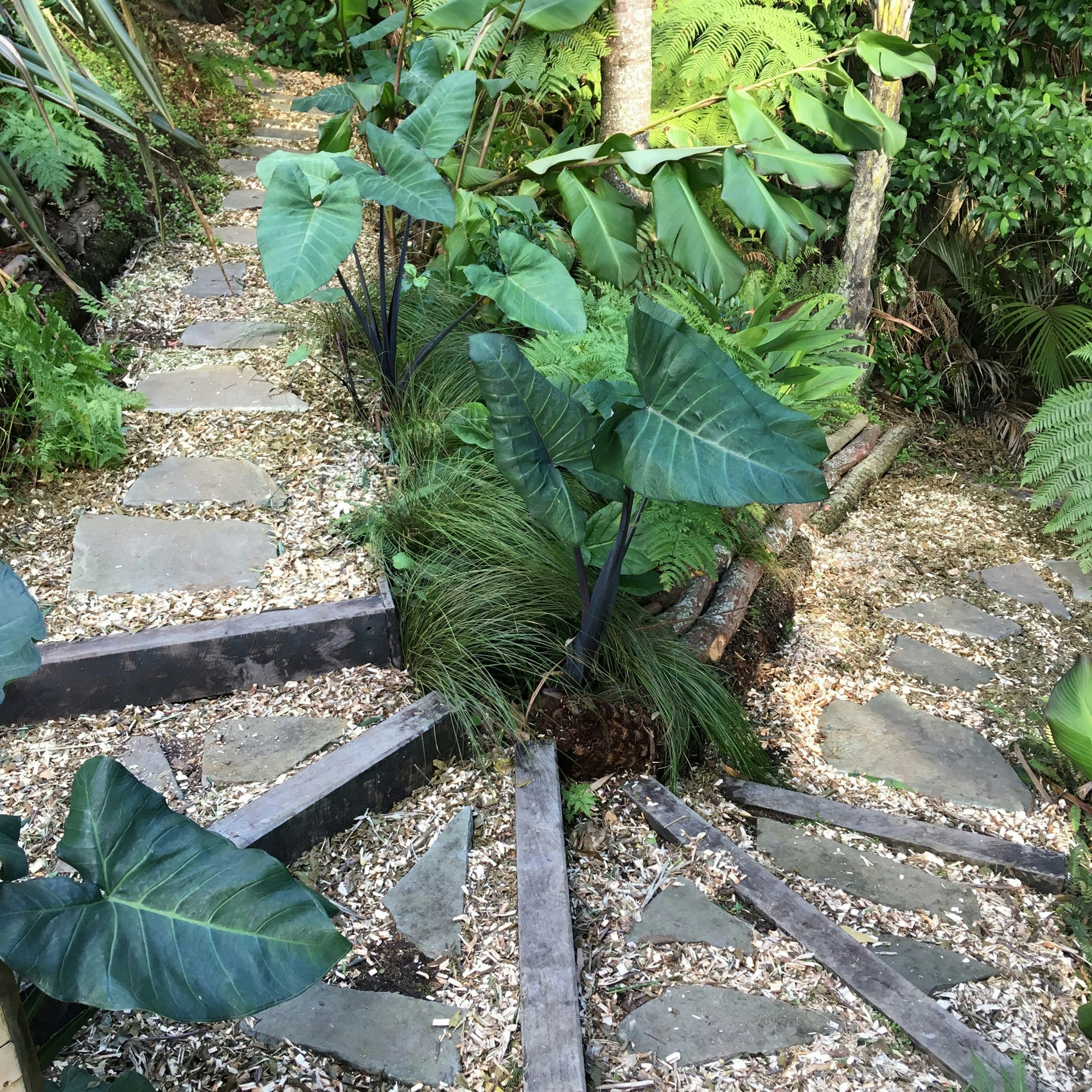
It was a satisfying way to use the resources that were available, in an aesthetically pleasing and functional way, it saved purchasing materials and carrying them down the steep site, and it created another point of interest in the garden in an almost sculptural way that would have probably otherwise been a bland retaining wall.
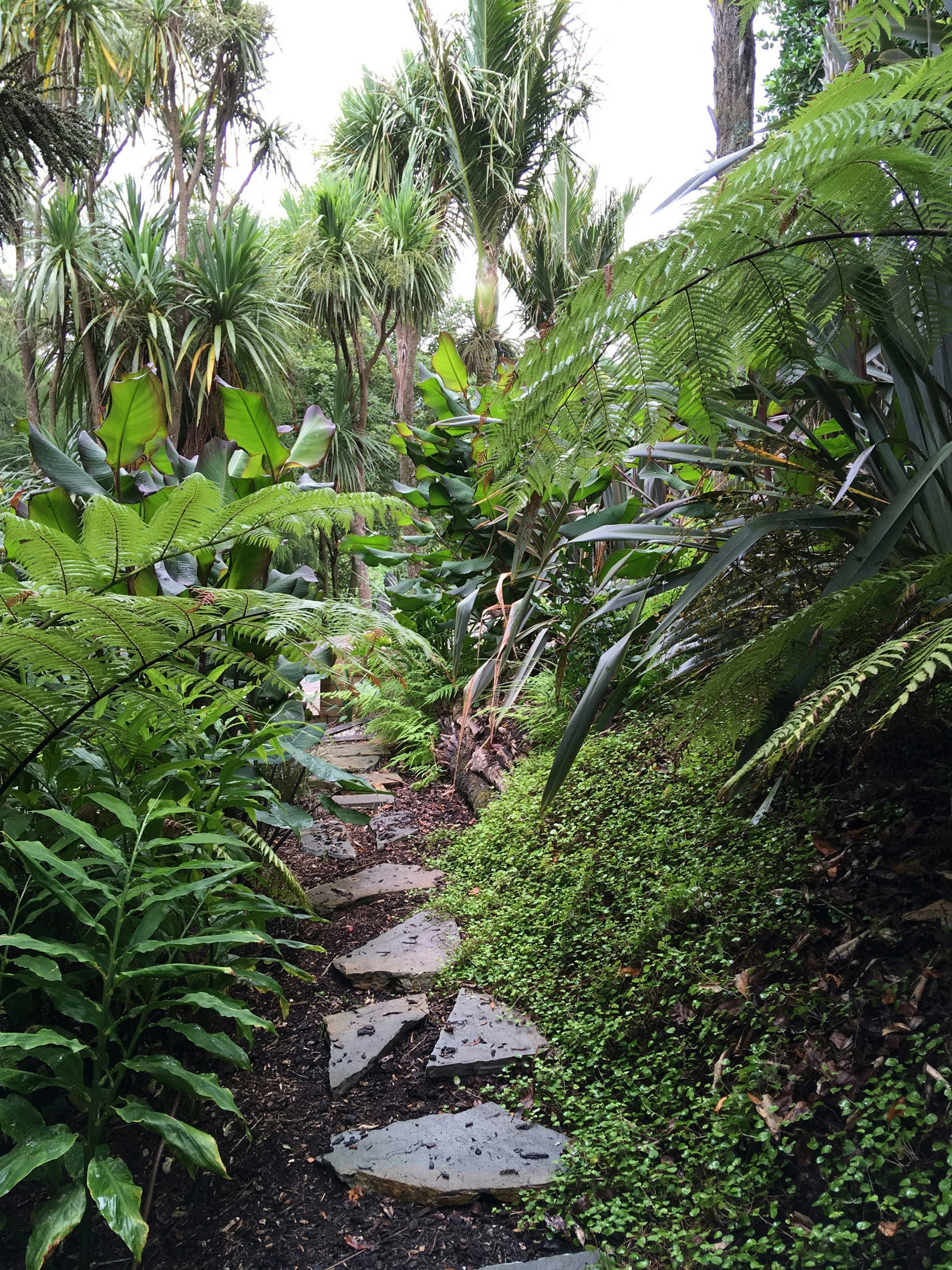
Words & pictures by Justin Hurt
Join Our Newsletter
XANTHE WHITE DESIGN
Auckland Studio
Phone: 09 815 1187
Email: info@xwd.co.nz
XANTHE WHITE DESIGN
Wellington Studio
Email: wellington@xwd.co.nz
